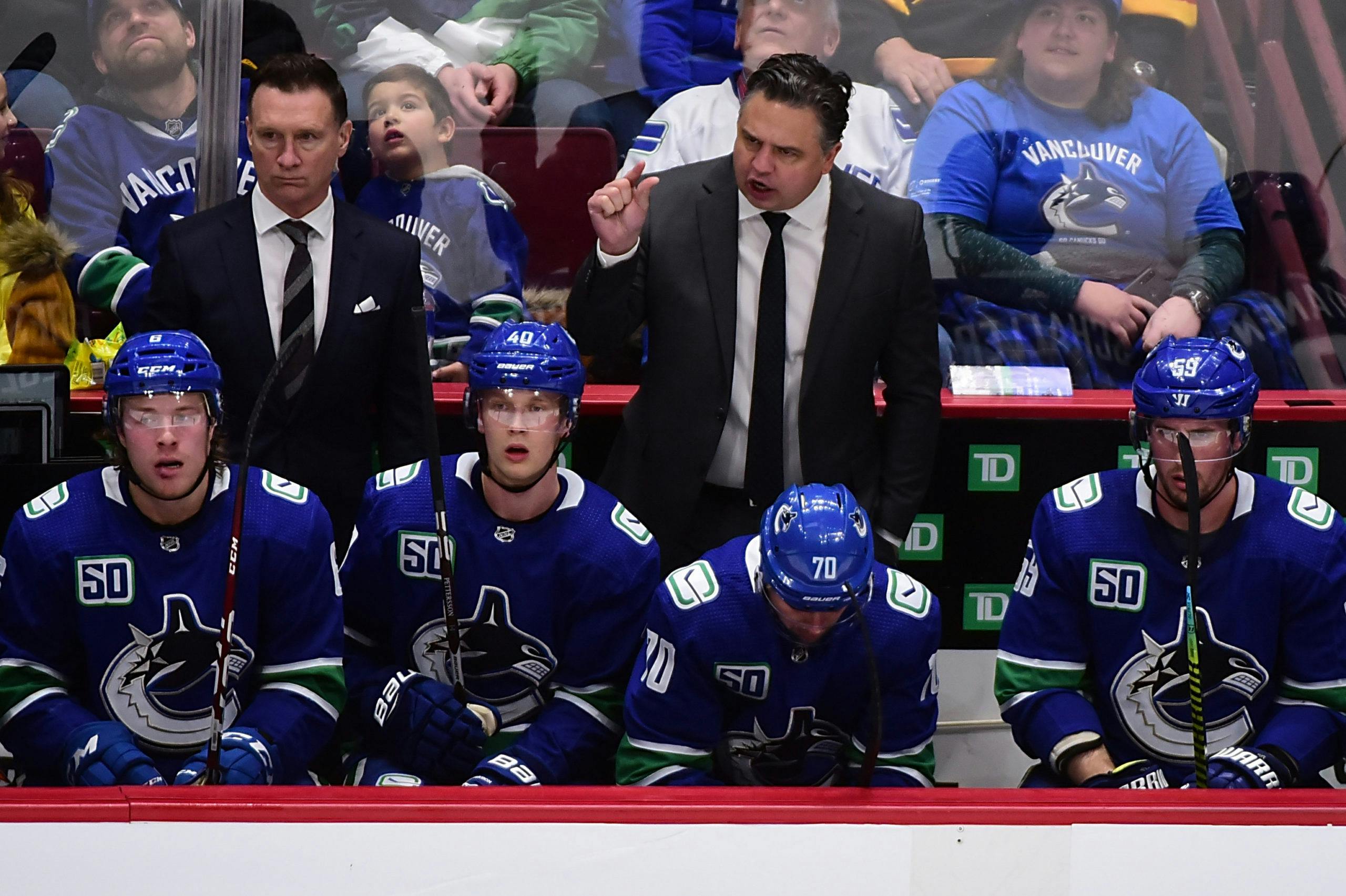The Canucks Are Mediocre

4 years ago
The first two months of the Vancouver Canucks’ season couldn’t have been more different from one another.
In October, the team got off to such a hot start that they were able to give fans their first palpable sense of hope in nearly five years. Sure, they’d gotten off on the right foot plenty of times before, but things were different this time. Every element of the team was clicking. They were getting scoring from most of their lineup, the defense was playing well in all three zones, and the goaltenders were there to bail them out on the nights when they looked a little off. More importantly, the team’s success wasn’t predicated solely on luck. They had strong underlying numbers, and were having success on both special teams.
Most observers were quick to point out that the Canucks were benefiting from an unusually soft schedule, and even internally the Canucks realized they weren’t as good as they looked on paper through the first month of the season, but the quality of competition wasn’t enough to explain how the Canucks had manage to rack up so many wins in such convincing fashion. The hope was that as the competition stiffened and the team’s percentages came back down to earth, they would be buoyed by their strong underlying numbers and be able to whether the storm throughout the month of November.
Instead, things went just about as poorly as they could have. The Canucks went 5-7-4 for the month, were hit with a couple of injuries to key role players, and their underlying numbers began to dip. The PP continued to be successful, but that’s about it.They went from the top-ten in 5v5 GF%, 5v5 goals for, and points percentage for the month of October to the bottom-five in November, and their goals against and shot share numbers took a significant dip as well.
| Stat | October | November |
| CF% | 52.15 (7th) | 49.7 (16th) |
| GF% | 58.8 (5th) | 39.2 (29th) |
| xGF% | 51.2 (13th) | 51.6 (12th) |
| GF | 30 (8th) | 20 (30th) |
| GA | 21 (8th) | 31 (23rd) |
| PPG | 12 (5th) | 16 (2nd) |
| Points % | 0.708 (6th) | 0.433 (27th) |
Surprisingly, however, their expected goal totals actually improved slightly, from 13th to 12th, indicating that their woes in November may have been as influenced by dumb luck as their success earlier in the year.
Many of the team’s biggest supporters, be they fans or pundits, used the team’s excellent record in the first month of the season to pat themselves on the back, and a number of its biggest detractors responded in kind when the wheels fell off the wagon in November, but the numbers suggest that holding any strong opinions about the quality of the team this season is a bad idea.
The Canucks were a significantly above average team in October and significantly below average one in November, with outcomes in each month being heavily influenced by luck. When you look at how they fared overall and try to account for factors like age, fatigue, and quality of competition, the Canucks basically look like a 50/50 hockey team with a good power play. In some years, those teams fare pretty well and can make some noise in the playoffs, in others, they can’t get all the elements to click at the same time and find themselves outside of the playoff picture by the trade deadline. At this point, it’s tough to guess where they’ll end up when all is said and done. Based on what they’ve achieved so far, the Canucks appear to be neither a good team nor a bad one. They’re in the mushy middle, at least for now.
When you take a look at what the roster has accomplished so far, it’s obvious that the team has improved from where they were just a year ago. What’s more interesting, however, is what these improvements say about the team’s decision-making process.
As far as that question goes, the jury’s still out. On one hand, the Canucks were able to make the jump from bad to middling this year, so it’s easy to envision them making the leap from middling to good in 2020-2021. On the other hand, Jim Benning forked over a lot of money and a first round pick to build a team that’s currently two points out of the final wild card spot, and with Pettersson and Hughes’ second contracts looming, the team is going to have to cut some fat to stay under the cap next season. That’s a fairly precarious position for this team to be in considering they finished in the bottom-ten last year and all their core players are under the age of 25.
Anyone who was hoping for the first two months of the season to serve as an endorsement or rebuke of the team’s rebuilding efforts is currently left with more questions than answers. The Canucks are mediocre, and there’s no telling how long they’re going to stay that way. Regardless of how you feel about the team’s rebuilding efforts, it’s too early to take a victory lap. The Canucks are still firmly in limbo.





